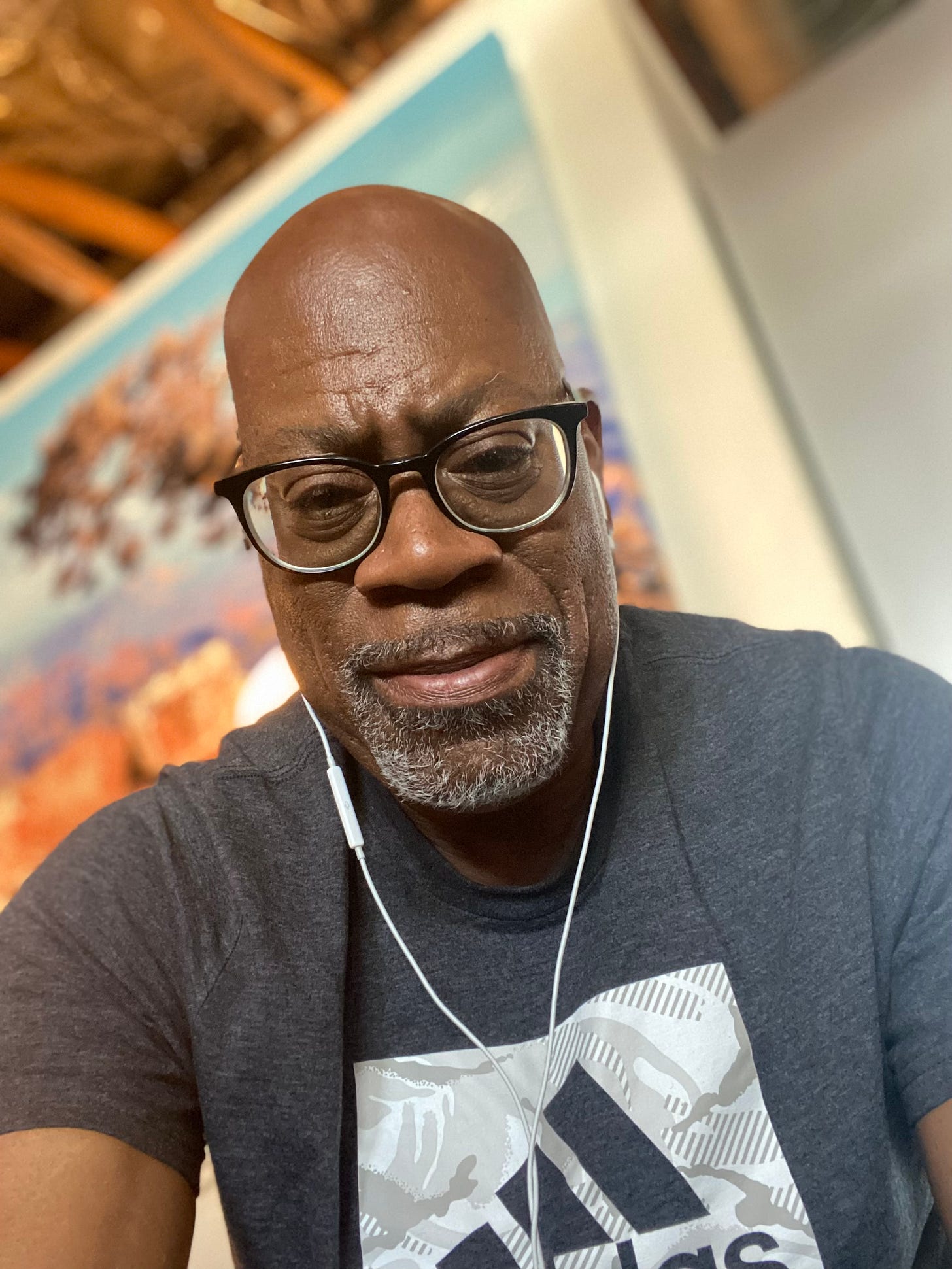VisuaLeadership and the Alchemy of Virtual Work Teams
Unsplash Photo Credit: Helena Lopes
It was March of 2020 and the Covid-19 global pandemic was beginning to take shape, its impact on the world still in its genesis.
Having launched “Great Books, Great Minds” two months prior, I had the good pleasure of interviewing Todd Cherches regarding “VisuaLeadership: Leveraging the Power of Visual Thinking in Leadership and in Life,” his new book that was being released that May.
I remember that conversation well, one that resulted in a highly popular feature article entitled “Eyeing What’s Ahead: Todd Cherches On Visual Leadership During Changing Times.”
So a little about Todd. He is the CEO and co-founder of the NYC-based management, leadership, and executive coaching firm Big Blue Gumball. He’s been a TEDx speaker (The Power of Visual Thinking) two-time award-winning Adjunct Professor of Leadership at NYU School of Professional Studies/Division of Programs in Business and a leadership lecturer at Columbia University.
In my latest feature interview with him, we explore the theme of VisuaLeadership and how it can be applied to today’s emerging new world of virtual work teams and AI.
How has the post-pandemic business environment changed amid the emergence of virtual work environments?
We’re living in a hyper-VUCA world that is more Volatile, Uncertain, Complex, and Ambiguous than ever before. The pandemic has changed all the rules of the game and we’re riding a daily economic roller coaster. So the entire world is now in a continuous state of flux and unrest.
The acronym PESTLE also comes to mind, as internal company decisions are impacted by all of the Political, Economic, Sociological, Technological, Legal/Regulatory, and Environmental changes going on out there, chief among them are political divisiveness, financial fluctuations, numerous social issues, AI, and Climate Change.
What sorts of challenges as well as opportunities do you see on the horizon as these changes continue to take shape?
One of the biggest ones facing leaders today is the battle between RTO (Return to Office) vs. WFH/WFA (Work From Home/Work From Anywhere) vs. Hybrid. This has led to questions like:
Does where you do your work, and when you do your work, matter?
How do you manage, lead, onboard people, build high performing teams, and create a culture when everything and everyone seems to be all over the place?
Additionally, in terms of my own leadership consulting, training, and executive coaching practice, I am finding that many organizations are paralyzed by indecision as they wait for things to “settle down” and stabilize in a world that is in a continuous state of exponentially faster changes.
And the business impact of this wait-and-see approach is expressed in a trend where many companies are increasingly focused on the short-term, along with being less willing to make long-term commitments.
Can you elaborate a bit more on this point?
Sure. For example, unlike in the past, where a company might invest in the creation of a five-year leadership development plan – identifying high potential performers and put them through a multi-year management and leadership training and coaching program – they might only be willing to commit to a one- or two-day in-person program, or a six-session online program, for a cohort of fewer people.
As one of my clients stated, “Why invest in developing all these people if we may have to let half of them go if there is another pandemic outbreak or economic downturn?” This reminded me of the classic L&D retort to this kind of objection: “You asked, ‘What if you train them and they leave?’ But what if you don’t train them and they stay?”
Unfortunately, in today’s strange new world, there are no easy answers.
What are some ways that leaders can better manage virtual teams through the use of visual tools?
One of the biggest challenges that leaders face is getting their people to “see” what they’re saying, and making their “vision” visible to their people. And this is made even more challenging in today’s virtual world where many employees are remote, leading to the classic approach known as “MBWA” – “Managing By Walking Around” being rendered impossible.
So what are some solutions that leaders can use to successfully navigate this virtual workplace model?
Because many, if not most, people are not physically there in the office, it is more essential than ever to use “visual leadership” tools, tips, and techniques to translate your vision into reality. This might include using more visual imagery, mental models and frameworks, metaphors, and storytelling to help bring abstract conceptualizations to life so that people can “envision” future possibilities.
What are some practical examples here?
Among the many examples are: mind maps and storyboards; data visualizations and dashboards; process diagrams and blueprints, and more.
So, when leaders leverage the power of visual imagery and visual language in their communications, it has been proven to enhance “Attention, Comprehension, and Retention,” getting people to focus, to understand, and to remember key messages, increasing the likelihood of turning these leadership visions into realities.
Many organizations are experiencing talent shortages that are hindering the productivity of their work teams. What are some ways that the VisuaLeadership strategies you discuss in your book may be used to boost the recruitment and retention of top talent?
Despite what many leaders think, their people are not motivated by facts and figures…but by feelings. “Increasing shareholder value by 5% this quarter” is not a rallying cry that gets most employees up and out of bed in the morning.
As Dan Pink wrote about in his classic book, “Drive: The Surprising Truth About What Motivates Us,” people are motivated by three things – Autonomy, Mastery, and Purpose.
Employees are most engaged when they have the freedom to do their work in the manner that works best for them. Moreover, they want to be learning and growing everyday; and they want to do work that matters. If leaders can remember this, it will not only help to create a culture and climate that attracts talent, but also gets them to want to stay and do their best work.
I know that this is a bit off-topic a bit. But I’m curious as to what sorts of conversations are you hearing in your professional circles about the growing impact of AI in the business world?
Everyone’s talking about AI these days and for good reason, for it is changing the way everyone does everything. And, while it is far from perfect right now – and may be perceived as both thrilling and terrifying – it is still in its infancy.
All this being said, now is the time to jump on this bandwagon before it passes you by. While it is true that many jobs will be made redundant by AI, this new technology will also open up a world of unforeseen and unimagined possibilities. For as the saying goes, the best way to not be replaced by AI is to figure out how to leverage the power of AI to make yourself more valuable, indispensable, flexible, and adaptable.
How do you believe that VisuaLeadership may be able to spark a fresh set of conversations and potentially a new narrative in this space?
As for me, I have just started dipping my toe into the AI pool, playing around with it as one would with a new toy. For example, I recently asked ChatGPT to “Write five jokes about visual thinking in the style of Jerry Seinfeld.” While the jokes were far from funny, the fact that it was not too far off was awe-inspiring.
With respect to VisuaLeadership, the possibilities are endless in terms of being able to coming up with visual images to accompany blog posts, generate a list of metaphors or analogies, turn a dry 8-step management process into an engaging story, and so much more.
In assessing today’s organizational landscape, what is keeping you up at night in terms of the needs of leaders amid the massive changes they are experiencing?
One of the biggest challenges facing many leaders in today’s organizational landscape – and is the focus of much of my executive coaching work -- is the tendency to look backwards to the safe and the familiar, rather than forward to the new world of possibilities that lie ahead.
Not to generalize based on generational stereotypes, but I see a lot of Baby Boomer managers who want to turn the calendar back to 2019 and pretend this whole pandemic thing never happened.
Whether it is the Return to Office battle mentioned earlier, or instituting office dress codes, or putting other bureaucratic policies in place, employees who have experienced newfound autonomy and flexibility in recent years – especially younger employees who desire more, not less, work/life balance and integration – are resisting the return to the old way of doing things. Most notably, many are voting with their feet by walking out the door.
So, the challenge is for leaders to explore new ways of working that will meet the needs of the organization while, at the same time, meeting the complex needs of an increasingly diverse workforce.
In closing, are there any books you’ve read recently that offer valuable perspective relative to these trends?
While there have been many books written on the topic of “the future of work,” with the rapid rate of change these days, many of them become obsolete before the print even dries on the page. But a few of the books I have read that leaders may find helpful to wrap their minds around and reconsider the new world of work:
Humans at Work: The Art and Practice of Creating the Hybrid Workplace by Anna Tavis and Stela Lupushor
The Office is Dead, Now What?: A Post-Pandemic Field Guide for Leadership by Maryanne Spatola
Where's the Office?: Moving Today's Leaders from What IS to What CAN BE by Wilford A. Lewis and Heather Hansen O'Neill







